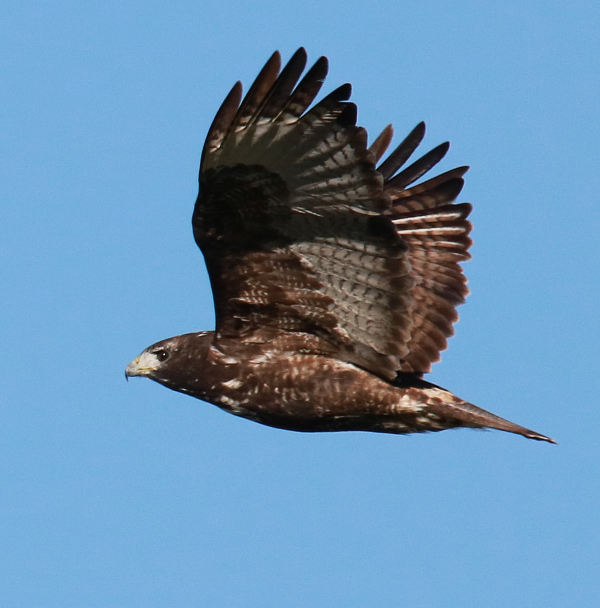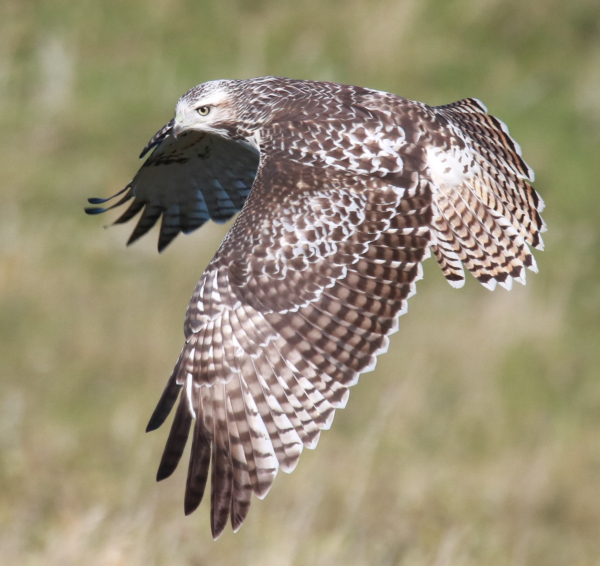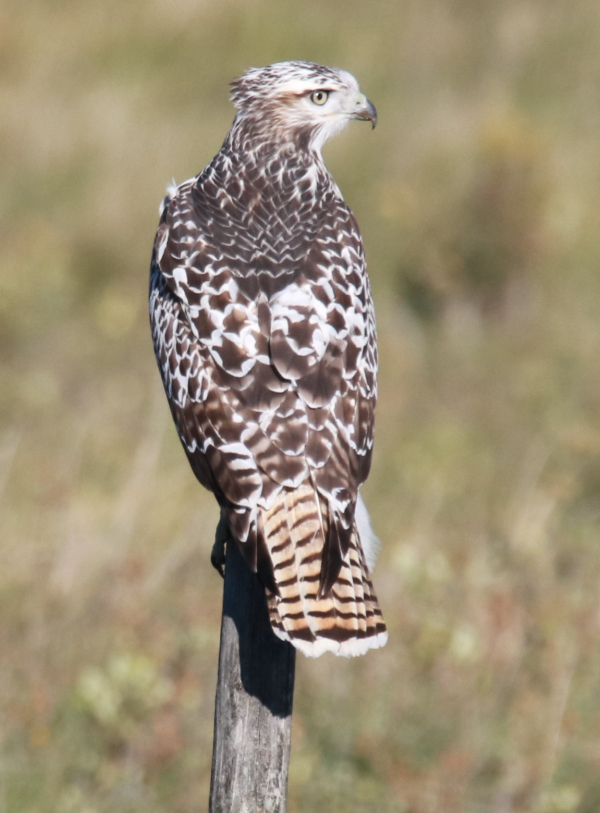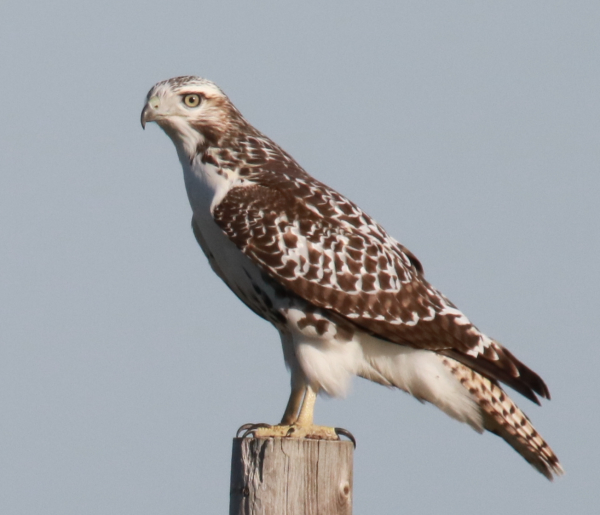One of the things that makes birding so fun, and so exciting, is that you never know what’s around the next corner, or over the next hill. Case in point: 2 impressive hawks thoroughly surprised me along the Lost Road last Sunday, providing 2 photo opportunities within just a couple hundred yards! The first flew out of a lone cottonwood as soon as I made the turn onto the deserted road – and it was a dark morph Harlan’s Red-tailed Hawk, close and looking mostly black in the afternoon light.

Luckily, it flew westward, providing a few nice photo ops. As it passed by, I had a feeling it might try to circle back to the tree, so I stepped out and watched the black hawk turn south, then east – c’mon baby – then back north to approach the cottonwood. That’s when I zeroed in on the hawk as it flew closer in the best light of its circle flight – what fun! The impressive black beauty, provided a nice series of flight photos, but it passed on the idea of perching in the tree again to continue its flight a half-mile west where I lost sight of it between 2 hills.
Resuming my drive, I barely made it 200 yards down the road before an opposite-colored hawk made me gasp out loud. Just below the crest of a hill was a young light morph Krider’s Red-tailed Hawk that flew from its low perch, but only a few feet to the ground. I photographed it standing among the prairie grasses after it apparently missed its intended prey. The beautifully marked hawk took a short flight to the next weathered fence post, which was little more than a stick in the ground, but an attractive perch nonetheless.

I photographed the hawk from behind as it continued its hunt, and it made 2 more short flights to the ground, but the third time was the charm when it made a quarter-turn and took another short flight more in my direction. That time I managed a couple photos of its floating flight – the first of which turned out beautifully with its wings spread downward, and its light-colored tail spread wide. After about 15 minutes back at its perch, the young raptor flew a quarter-mile cross-country where it hunted on foot along a rocky slope.
I relocated to a closer position along the road and watched as the hawk walked this way and that, seeming to be chasing large insects. I was ready for action, and as it took flight I tried a couple photos of it in flight against the background of prairie grasses. I was almost surprised that it landed on a fencepost close by, which provided a chance to photograph it from a different angle with another view of it from the side that showed more of its white underside.

Lighting, Timing, Positioning
However, the hawk’s position related to the direction of the sun created a harsh shadow across its white belly, the area I most wanted to accent in this position. The shadow effectively changed the white underside of the hawk to a dark gray, which would usually deem it unworthy of publication, but I include it at the end of this article as an example of what happens when the light isn’t just right. It’s a common problem we bird photographers encounter, and there was nothing I could do about it, aside from trying to walk to my right 100 feet or more – but I could see the hawk was already a bit wary, for the first time during this photo session.

While searching for the next movement among the prairie grasses, the wind caught the young hawk’s nape to create the suggestion of a crest. Unfortunately, the hawk never faced the photographer to show its front view at this perch site.
|
It was actually a bit surprising that during that half-hour of photographing the 2 hawks, I had perfect light – until then. But by pre-planning my birding drive during the period of prime light, I had improved my chances of having the best light if a photo opportunity might arise. I also drove down the Lost Road with the sun at my back, and potential photo subjects in front of me. At this point of the first week of fall, in my neighborhood I consider the period from 4:30 to 6:30pm to provide the best sunlight angle, which eliminates most shadows and provides bright colors and detail to photos, while providing the chance to use fast shutter speeds to stop the action of birds in flight, yielding sharp photos. Timing, Lighting, Positioning! And Luck!
I took the photos of the hawks between 5:00 and 5:30, when the sun’s angle provides all the good things I listed above, but it also eliminates a lot of shadows. Shadows can be a photographer’s worst luck, and cameras overemphasize the darkness of shadows much more than what we see with our eyes. You will note that there are a minimum of effects of shadows in the hawk photos, due to the fact that the birds were in the right position in relation to the road (luckily), until the last photo op, when the young Krider’s hawk perched on the south side of the road facing north, creating the shadow.

After repositioning, the Krider’s Red-tail provided an opportunity to take a documentary photograph of its very white ventral side, but the angle of the sunlight at that perch created a strong shadow that covered the white plumage with a dark gray cast.
|
For the photos of the dark morph Harlan’s Red-tailed Hawk in flight against the clear sky, my shutter speed varied from 1/1250 to 1/1600 of a second at f8 with an ISO setting of 400, which provided sharp action photos. The photos of the young light morph Krider’s Red-tailed Hawk were also take with an ISO of 400, an aperture of f8, and shutter speeds that varied from 1/1000 in the photos with the prairie background – still fast enough to stop the action of the spread flight of the hawk – to 1/1600 for the last image with the sky as the background.
As you search for your next photo opportunities, whether on foot, by vehicle, or at sea, enjoy the beautiful days of early fall and the varied photo ops that you find along the way. Be prepared by knowing the best time of the day to photograph, the best camera settings for that period, where to go, and what to do when that surprise animal covered in feathers flies out from the cover of the next tree. That’s when the fun begins!
Article and photos by Paul Konrad
Share your bird photos and birding experiences at editorstbw2@gmail.com